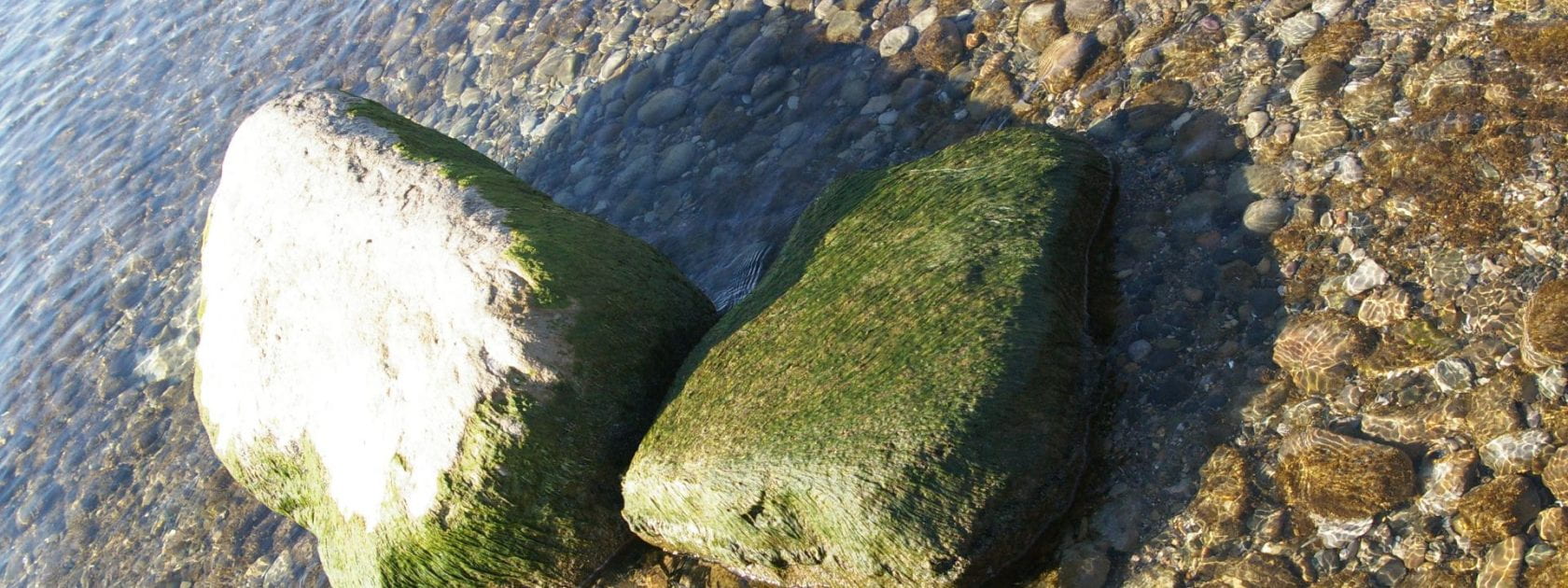What is Physical Ecology?
Physical Ecology is the interdisciplinary examination of evolutionary and ecological phenomena across taxa, populations, communities and ecosystems within a physical perspective. It involves the examination of how organisms have:
- Adapted to the constraints imposed by the physical environment
- Adapted to use physical mechanisms to satisfy biological processes
- Matched form to function.
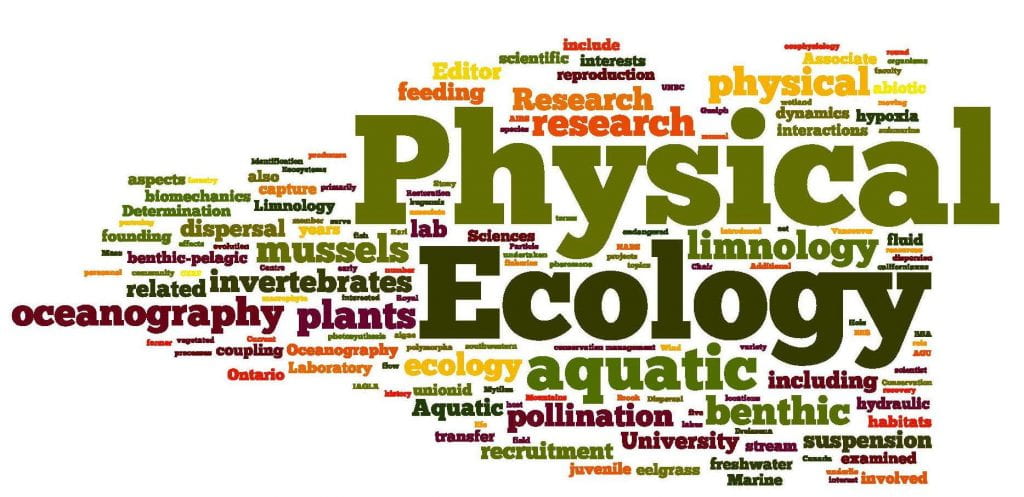
Research Background
My interest in the physical ecology was influenced by the Marine Ecology Course at the MBL (Woods Hole). I undertook my Master’s research under the late Akira Okubo at SUNY Stony Brook, where I examined the flow around eelgrass (Zostera marina) plants and flowers, before moving to Cornell University where I studied the biomechanics of submarine pollination in eelgrass for my dissertation under Karl Niklas.
I spent five years in Mechanical Engineering at the University of Toronto, as a postdoctoral scientist and research associate, where I set up a lab to examine the biomechanics of recruitment and adhesive. Later while also affiliated with the Royal Ontario Museum, I examined suspension feeding and benthic-pelagic coupling in zebra mussels (Dreissena polymorpha and D. bugensis).
During my nine years as a founding faculty and Canada Research Chair in Physical Ecology and Aquatic Science at UNBC, I was involved in the studies related to suspension feeding and growth of blue mussels (Mytilus trossulus and M. californianus), the hydraulic habitats of stream periphyton and riparian management, abiotic pollination, pheromone dispersion, kelp holdfast mechanics, and particle capture in aquatic and wetland plants.
My primary interests at the University of Guelph are in the physical ecology of (1) trophic dynamics including suspension feeding and photosynthesis, (2) reproduction and early life history including abiotic pollination, broadcast spawning, mussel-host fish interactions and dispersal in juvenile mussels, and (3) aquatic sciences including the biogeochemistry of sediment/substrate-water interactions. My lab is actively involved in species and ecosystem recovery in southwestern Ontario involving SAR (Species at Risk) unionid mussels, and water quality issues including hypoxia in the Great Lakes and their watersheds.
In terms of the larger scientific community, I am an Associate Editor of Limnology and Oceanography, and Aquatic Sciences. I was Editor in Chief of Limnology & Oceanography: Fluids and Environments. I am a member of a number of scientific societies including: ASLO, BSA, AGU, AIBS, BES, CERF, IAGLR, NABS, SMB,and TOS.
Current Research Interests
The ecological and evolutionary problems that underlie my research interests include the convergent evolution of morphology, the manner by which organisms have adapted to their physical environment, physical aspects of energy transfer through ecosystems, and physical-biological linkages in aquatic systems. I have been fortunate to ask many of these questions within an applied context related to industrial ecology, fisheries, forestry, and conservation/management. Most of this research is undertaken in the Physical Ecology Laboratory (and Hagen Aqualab) and in the field in locations that include Lake Erie, Vancouver Island (Bamfield Marine Sciences Centre), and the Rocky Mountains.
Current Research Projects
I am interested in a variety of topics related primarily to marine and freshwater benthic plants (including algae) and invertebrates. Additional information about lab personnel, research projects, and our lab resources are posted on the Physical Ecology Laboratory webpage.
1) The Physical Ecology of Trophic Transfer in Aquatic Ecosystems – Laboratory and field experiments directed towards the understanding of the effects of hydrodynamics on mass transport in freshwater and marine ecosystems (e.g., macrophyte photosynthesis, and suspension feeding of zooplankton and bivalves). This effort involves laboratory and field research in the freshwater and marine environment. We are involved in research in the Laurentian Great Lakes.
| (i) The effects of fluid dynamics on macrophyte productivity. | (ii) Fluid dynamic aspects of suspension feeding in bivalve molluscs. |
| Macrophyte-flow interactions: | Benthic-pelagic coupling in Lake Erie: |
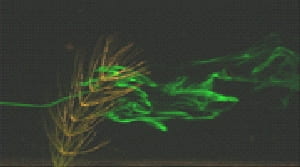 | 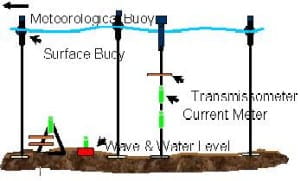 |
| Flow visualization around Ceraptophyllum demersum using light induced fluorometry at a chamber velocity of ~ 2 cm/s and fluoroscein dye (Trelenberg and Ackerman unpublished). | A schematic diagram of the instrumentation package deployed to examine benthic-pelagic coupling of zebra mussels in the western basin of Lake Erie (Ackerman et al. 2001 Limnol. Oceanogr. 46:892-904). |
| Productivity of aquatic plants: | Hydrodynamics of suspension feeding: |
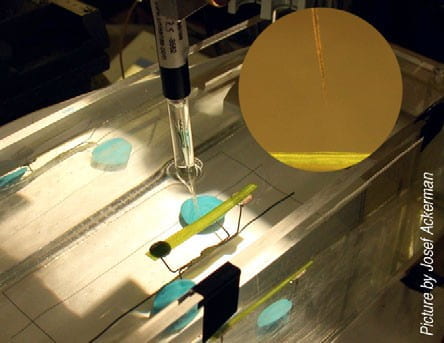 | 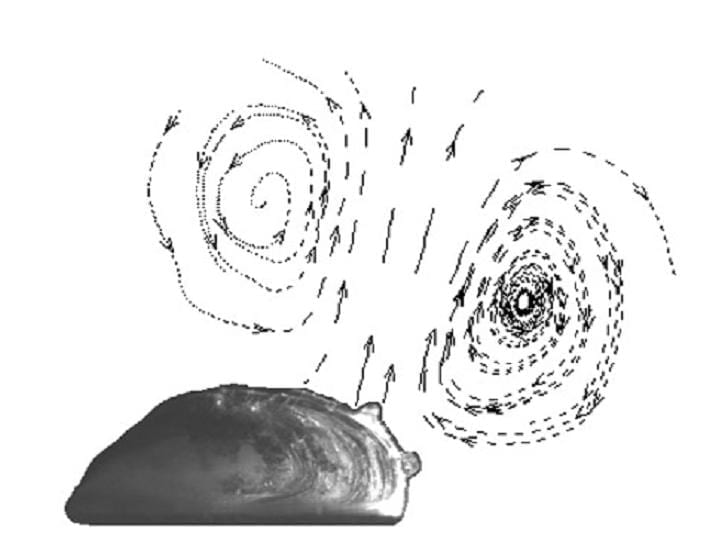 |
| An examination of the effects of mass transport on the photosynthentic rate of Vallisneria americana using a small recirculating flume and oxygen microlectrodes (inset) (Nishihara and Ackerman 2006, 2007a, 2007b, 2008, 2009). | Vorticity in the exhalant plume of Dreissena polymorpha as indicated by streamlines generated from PIV images. Note the free vortex ring (Nishizaki and Ackerman 2017 Limnol. Oceanogr. 62:125–136). |
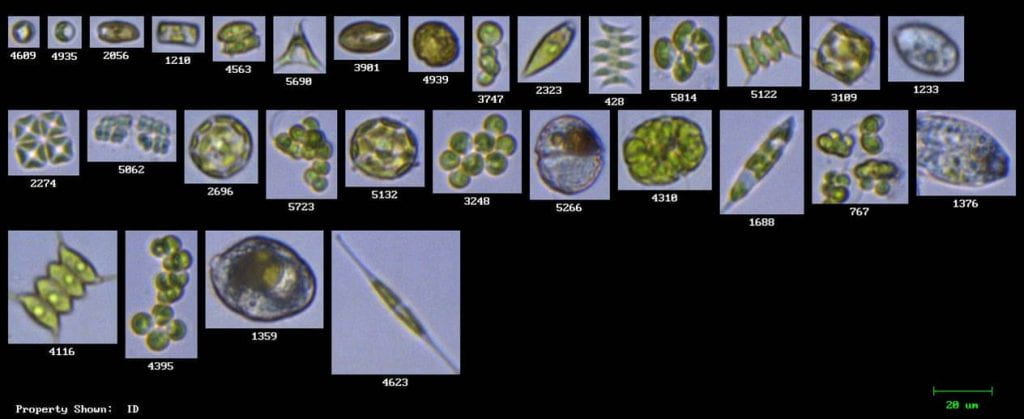 | 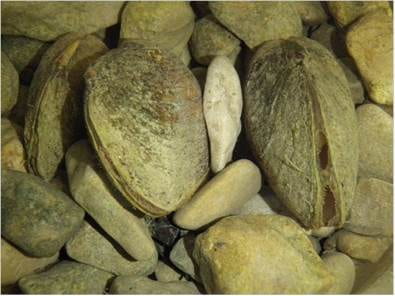 |
| Some FlowCAM images of phytoplankton from the Sydenham River. Imaging flow cytometry is used in a number of our ecological and ecophysiological studies. | Suspension feeding in unionid mussels (Vanden Byllaardt and Ackerman. 2014, Mistry and Ackerman 2016; Tuttle-Raycraft et al. 2017) |
2) The Physical Ecology of Reproduction, Dispersal, and Early Life History – Laboratory, numerical, and field studies into the external fertilization of pollination and dispersal in aquatic macrophytes, the dispersal and recruitment of broadcast spawning benthic invertebrates, and the physical-biological interactions of pelagic larvae (including ichthyoplankton of ecologically important fishes). (NSERC Funded)
| (i) Reproduction/Dispersal in Aquatic Macrophytes. | (ii) Reproduction/Dispersal in Aquatic Invertebrates. |
| Submarine pollination in Zostera marina | Dreissena early life history Juvenile-adult sheltering in sea urchins |
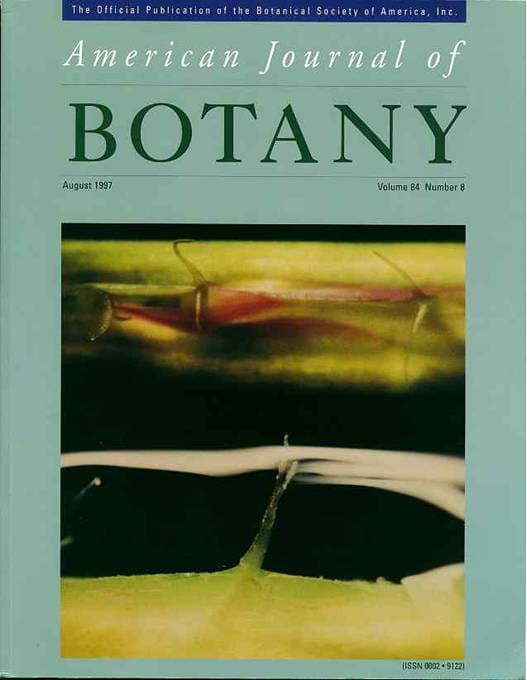 |  |
| Flow visualization around carpellate flowers of Zostera marina from above (top) and from the side (bottom) in a chamber velocity at ~ 3 cm/s (Ackerman 1997 Amer. J. Bot. 84: 1099-1109 and 1110-1119). | Recently metamorphosed red sea urchin juveniles use a secondary chemical cue to seek the shelter of adult urchin when confronted by predators or strong flows (Nishizaki & Ackerman 2005 .Limnol. Oceanogr. 50:354–362) Dreissena polymorpha larval stages: D – D-shaped veliger; V – veliconcha; P – pediveliger; v – velum; f – foot of pediveliger (Bar = 200 pm) (Ackerman et al. 1994. Can. J. Zool. 72: 1169 – 1179). |
| Particle capture on branched collectors | Turbulent effects on Walleye early life history |
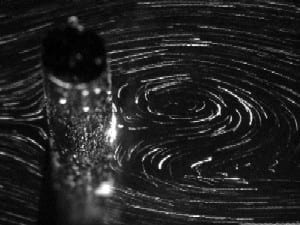 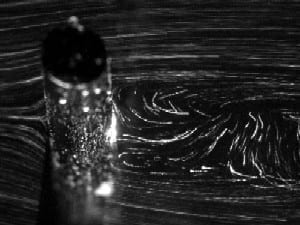 |  |
| PIV images of particle capture on a circular cylinder (3.2 mm diameter) at collector Reynolds numbers of 24 (top) and 71 (bottom). Flow is from the left (Ackerman et al. in prep). | Walleye (Sander vitreus) water-hardened egg used in dislodgement study (J. Carman) |
(3) Conservation and Restoration of Aquatic Ecosystems – (i) Biodiversity and autoecology of endangered freshwater bivalves related to reproduction and early life history; specifically the identification of fish-hosts of threatened and endangered freshwater mussels and rearing their juveniles for reintroduction to the wild. (ii) Lake Erie limnology – we are examining a number of hypotheses related to the mechanisms leading to hypoxia in Lake Erie.
| Unionid Species at Risk | Lake Erie Hypoxia |
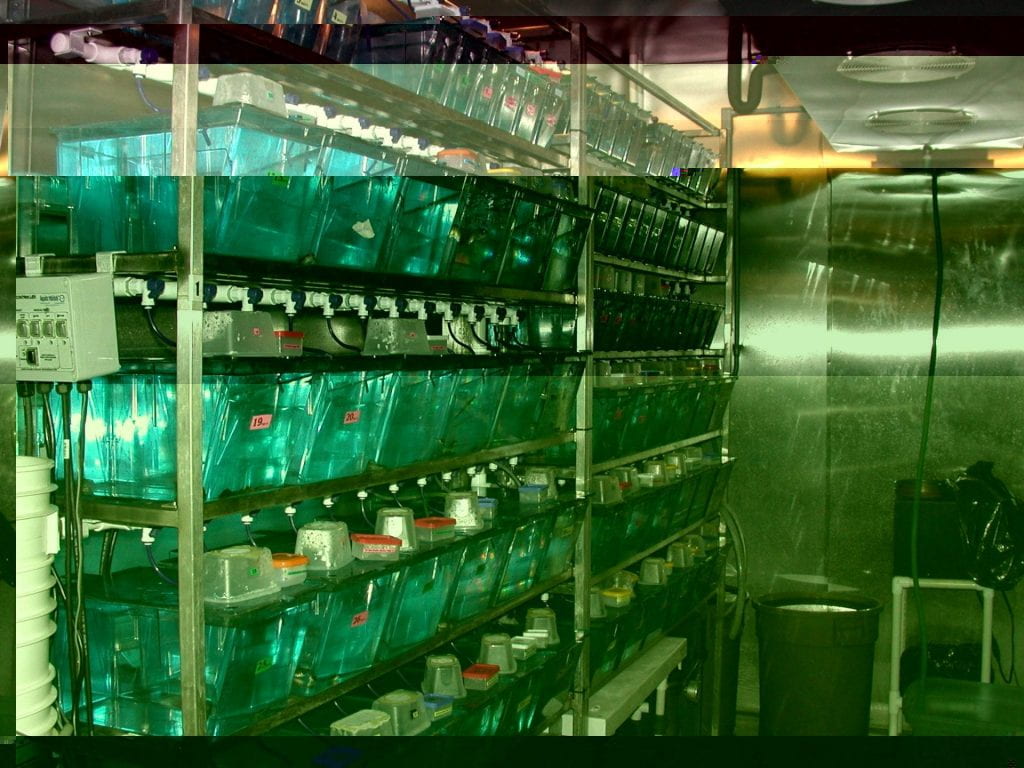 |  |
Experimental facility in the Hagen Aqualab at the University of Gueph for determining the fish hosts of endangered and threatened unionid mussels. Each aquarium holds several fish from a fish-mussel exposure. Additional aquaria and juvenile rearing facility is on the right side of the chamber (McNichols et al.2011). | Image a tripod deployed in the central basin of Lake Erie on the deck of the CCGS Limnos. The tripod has a series of O2 and temperature loggers, an ADCP, CTD, and Optical Backscatter sensor. (Bouffard et al. 2013, 12014) |


